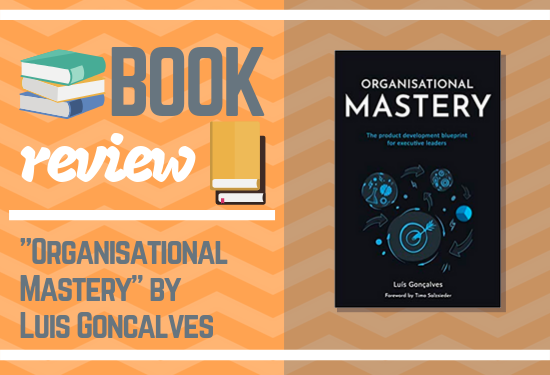
Book review
I know Luis Goncalvez since quite some days and I was surprised when he gave me a copy of his book. I read his book “Organisational Mastery” on organisation transformation within a week and was really impressed. The book is split in two parts – the first part setting the scene with some theoretical background and the second part where the theory gets practical. The second part is a great mix of Luis experience in building organisations and real hands-on practical tips on how to do what in which sequence. The book is not meant to be a step-by-step guide for each and every organisation – but there are some patterns included, some practical tips which might support you in finding the right way to changing your organisation.
In “Organisational Mastery”, Luis bases the whole transformation – which sometimes appear to be quite radical – on five key elements:
1. Translating Strategy Into Daily Operations
Luis explains how OKR’s and / or Agile Portfolio Management are a key element in connecting Strategies and daily work, giving meaning to the small daily tasks and connecting them with the broader picture of a strategy aiming to reach an even bigger vision. Furthermore, he talks about the relevance of CoD (Cost of Delay) and how the understanding of this KPI can help in prioritization of activities. He also talks about the difference for an organisation if working on products or on projects. He also highlights how the goals and the strategy are aligned in a certain cadence.
Lean Portfolio Management (SAFe)
Agile Portfolio Management Definition and Key Principles
2. Optimise For Flow
Luis raises some criticism on typical hierarchies, no matter if line or matrix organisation. He’s a big proponent of mini startups within traditional organisations. No bi-modal thinking and working. Just create self-contained and independent mini startups around your key products to minimize dependencies as far as possible. Prerequisites for such an organisation is clarity on vision and the will to say “no” to non-relevant activities.
3. Continuous Improvement
Luis introduces the Organisational Impediment Board as a tool that allows the identification of issues, problems, in-efficiencies, … on a broad level with attention from all levels of people – including C-Level management.
Our Company Impediments Wall
Impediment Busting: Designing an Impediment Removal Process for Your Organization
4. Knowledge sharing
Luis positions the Communites of Practice (CoP) as a key element for knowledge sharing within an organisation of any size. These communities exist on all levels: team, product, organisational and external communities. An example for external communities are meetup and tech talks organised by the company for the community with the aim of getting new knowledge and talent attracted to the organisation.
5. Driving innovation
Innovation needs to be driven purposefully. Luis proposes the frequent execution of Design Sprints (Design Thinking, Google Sprints).
The whole book explains the five pillars and the effect on the organisation on a theoretical and practical level. Personally, I find the book very inspiring and hope to get some of the mentioned aspects implemented in an organization quite soon.
A definite must read book.

